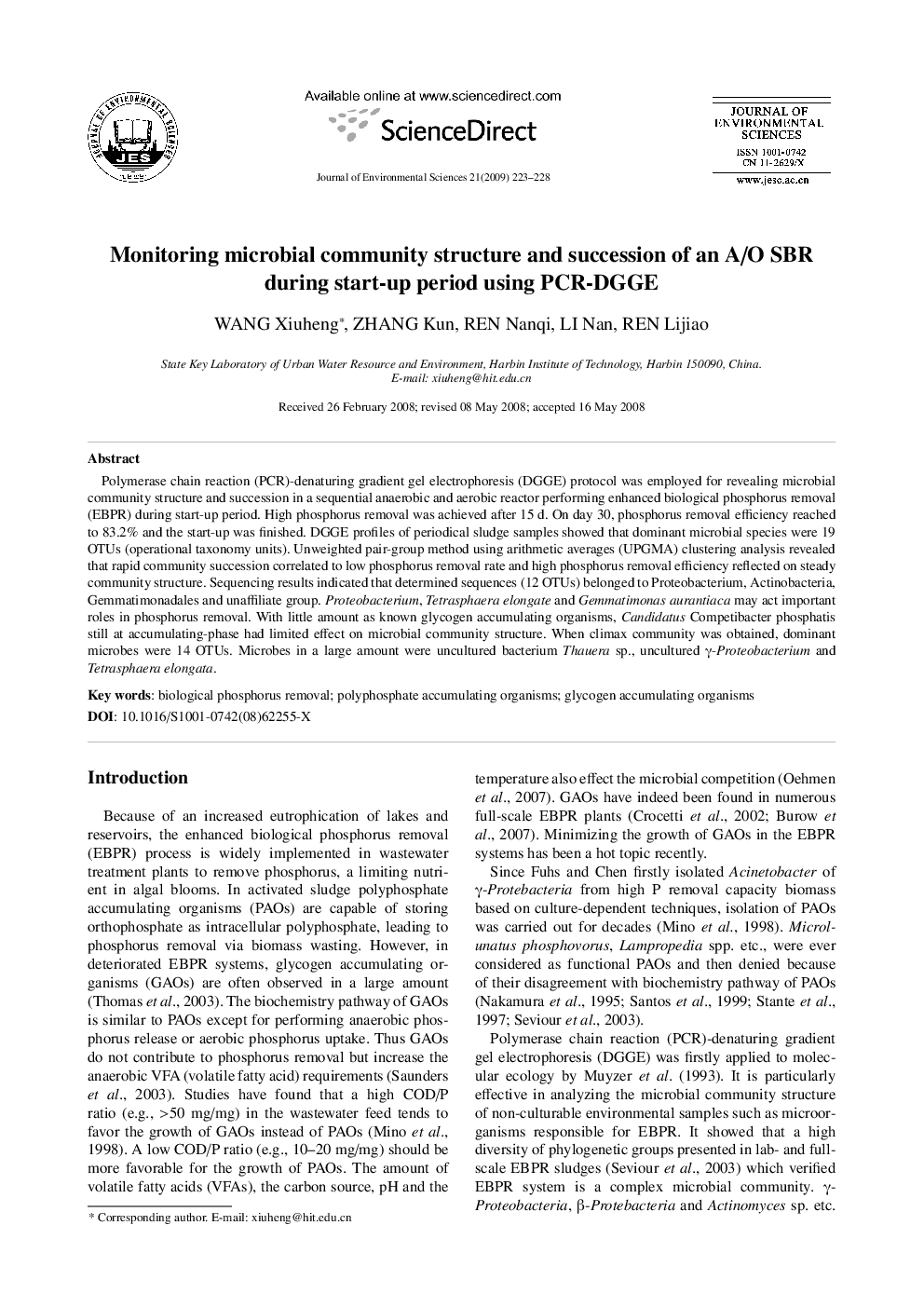| کد مقاله | کد نشریه | سال انتشار | مقاله انگلیسی | نسخه تمام متن |
|---|---|---|---|---|
| 4456177 | 1312546 | 2009 | 6 صفحه PDF | دانلود رایگان |

Polymerase chain reaction (PCR)-denaturing gradient gel electrophoresis (DGGE) protocol was employed for revealing microbial community structure and succession in a sequential anaerobic and aerobic reactor performing enhanced biological phosphorus removal (EBPR) during start-up period. High phosphorus removal was achieved after 15 d. On day 30, phosphorus removal efficiency reached to 83.2% and the start-up was finished. DGGE profiles of periodical sludge samples showed that dominant microbial species were 19 OTUs (operational taxonomy units). Unweighted pair-group method using arithmetic averages (UPGMA) clustering analysis revealed that rapid community succession correlated to low phosphorus removal rate and high phosphorus removal efficiency reflected on steady community structure. Sequencing results indicated that determined sequences (12 OTUs) belonged to Proteobacterium, Actinobacteria, Gemmatimonadales and unaffiliate group. Proteobacterium, Tetrasphaera elongate and Gemmatimonas aurantiaca may act important roles in phosphorus removal. With little amount as known glycogen accumulating organisms, Candidatus Competibacter phosphatis still at accumulating-phase had limited effect on microbial community structure. When climax community was obtained, dominant microbes were 14 OTUs. Microbes in a large amount were uncultured bacterium Thauera sp., uncultured γ-Proteobacterium and Tetrasphaera elongata.
Journal: Journal of Environmental Sciences - Volume 21, Issue 2, 2009, Pages 223-228